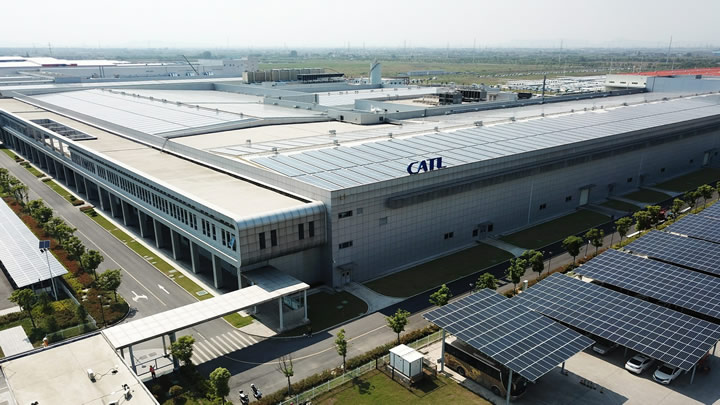CATL's Liyang plant recognized as Lighthouse factory by World Economic Forum

CATL announced today that its Liyang plant in east China's Jiangsu Province has been recognized as one of the 21 new members of the Global Lighthouse Network (GLN) by the World Economic Forum (WEF), adding the third Lighthouse to the battery industry following CATL's Ningde plant and Yibin plant.
"To address soaring demand and increasing labour costs, and to meet its carbon neutrality commitment, CATL Liyang applied big data to simulate quality-testing, additive manufacturing to reduce changeover times, computer vision to achieve micron-level quality inspection, and deep learning to optimize process controls and energy management," the World Economic Forum wrote in its announcement of the new Lighthouses on December 14th. "This has resulted in a 320% output increase, a 33% reduction in manufacturing costs, a 47.4% reduction in normalized emissions and a 99% reduction in quality defects. Defect measurement has been upgraded from 'per million' to 'per billion'."
The GLN is a collaborative platform bringing together forward-thinking manufacturers leading the charge in adopting Fourth Industrial Revolution technologies. Kiva Allgood, Head of the Centre for Advanced Manufacturing and Supply Chains of the WEF said, "Lighthouses are pioneering a path to unprecedented global impact, strategically weaving innovation throughout their expansive network – sculpting both a sustainable future and an era of transformative and lasting change."
To meet the soaring market demand and contribute to the global efforts to fight climate change, CATL's Liyang plant has leveraged innovations including artificial intelligence (AI), 3D-printing and big data analytics to boost productivity and sustainability:
- Faster capacity testing process: As one of the bottlenecks during battery cell manufacturing, capacity testing and calibration process accounts for a major part of the entire manufacturing time and nearly half of the energy consumption of the entire production line. Based on big data modeling of full-cell capacity and combined with deep study of battery mechanism, CATL has developed an intelligent battery capacity estimation system, reducing the time of capacity testing and process energy consumption to a large extent.
- Quicker changeover time: The rapid development of lithium-ion battery technology has higher requirement on flexible production. By using the traditional machine tool processing methods, it usually takes over several weeks to replace fixtures, which is difficult to satisfy customers' needs. With the help of virtual simulation and additive manufacturing, CATL is able to achieve quick virtual design, precise virtual verification, and 3D printing fast machining, which have dramatically shortened the average manufacturing lead time.
- Comprehensive operation and maintenance system: High quality battery products require high consistency during the manufacturing. By adopting Industrial Internet of Things (IIoT), edge computing and big data, CATL has developed an efficient equipment operation and maintenance system with multi-levels in the plant scale. It can achieve online monitoring and health management, and provide predictive maintenance so as to optimize maintenance plans and reduce equipment failure rates and maintenance cost.
- More precise quality inspection: Supported by high-precision 3D camera, AI and edge computing, CATL has developed quality inspection model with wrong-interception and fault-miss in super low level, which has achieved 100% defects detection in the seal pin welding process and eliminated Helium leakage detection, improving the defect rate from DPPM to DPPB level.
- Optimized sustainable energy management: To tackle difficulties in the energy consumption monitoring and energy waste caused by manual regulation, CATL has built a multi-factor environmental tuning model to enable the intelligent control on energy parameters across the entire plant. With a large number of sensors distributed across the plant, almost all of the plant's equipment can be intelligently monitored. Based on big and advanced process controller (APC) technology, equipment parameters can be analyzed and adjusted in real time, which significantly improves the plant's energy efficiency. Moreover, with the application of advanced carbon emission calculation model, CATL can monitor carbon emission of each production line in real time and track carbon emission reduction projects, providing reliable decision support for the plant's carbon emission reduction.
Among GLN's 153 manufacturing members, there are three Lighthouse factories in the battery industry, all of which are from CATL. In the future, CATL will continue to adopt its experience in Lighthouse factory in all its 13 plants globally, thus making its innovative technology accessible to more people, and contributing more to global sustainable development.
Comments (0)
This post does not have any comments. Be the first to leave a comment below.
Featured Product

